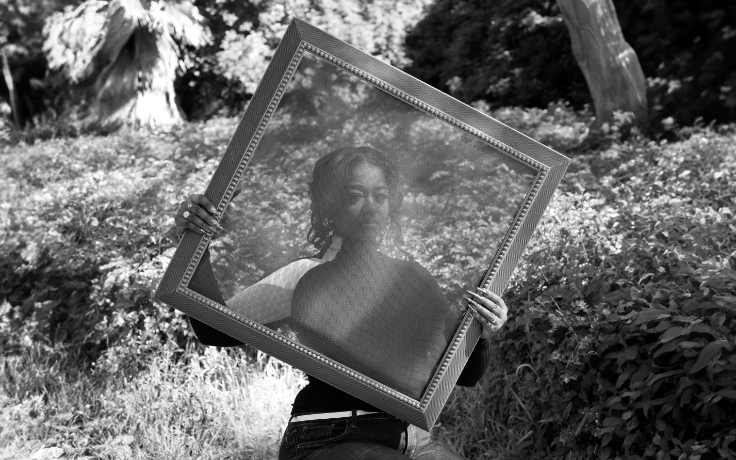BY THE TIME DOMINIQUE CARTER FOUND THE COURAGE TO FLEE, HER young daughter was living with a relative.
For the first couple of months, in early 2017, Carter crashed on a cousin’s couch. When that string ran out, she was luckier than many: She had a car where she slept and stored her belongings.
But that car quickly became a reproach, reminding her of how much she’d lost.
“I already considered myself at rock bottom,” Carter said. “I’d lost my stability. I was very embarrassed and ashamed of myself.”
The car, a 16-year-old sedan that she bought from a friend, triggered so many bad memories that she said she often walked to avoid driving it.
“I didn’t want to turn to that car.”
Carter, now 36, was also lucky to have found refuge at Jenesse Center after a few months on the streets. The nonprofit provides shelter, job training and counseling for victims of domestic violence, most of them from South Los Angeles.
Once there, she quickly sold the car.
“I wanted everything associated with that part of my life out of my life.”
“Trauma is trauma…”
Carter’s road back was a long one, and her story, though specifically hers, is reflected in countless lives around Los Angeles — relationships soured, jobs lost, abuse suffered. Time after time, those stories end on the streets of the city and county, adding to this region’s deep, difficult struggle to house those in need. Carter’s experience points to many needs, amplified across thousands of lives and anchored around the desperate value of a safe place to live.
“You cannot imagine being angry the way she was,” recalled Charmine Davis, who directs Jenesse’s family wellness program and worked with Carter when she first came to the shelter.
“Trauma is trauma, but this was chronic trauma,” she added. “You’re hyper-vigilant and angry at the situation. You feel that you’re the one at fault.” Life is better now. Carter works for another Los Angeles nonprofit that helps homeless individuals and families, many of whom are victims of domestic violence. Her job lets her give back, and she now shares an apartment in
West L.A. with her middle-school-age daughter. At least one in five women who become homeless in California are escaping violence by an intimate partner, according to a recent study from UC San Francisco.
Too often, women have to choose between their physical safety and a roof over their heads, said Anita Hargrave, the study’s lead author — precisely the choice that Carter faced.
The conclusions of UCSF’s researchers about what would help keep others, particularly women fleeing a violent partner, from the streets underscore Carter’s own hard-won insights.
Getting help
Sitting at a conference room table in Jenesse’s administrative offices, Dominique Carter spoke quietly but easily of her journey. Her hands were still, light pink manicured fingers folded in front of her. She smiled frequently, her long black hair falling around her shoulders.
A Baldwin Hills native and Hamilton High School graduate, Carter first became homeless in 2014 when her father kicked her out after an argument. She stayed at a series of motels that her mother helped pay for (her parents lived separately), and later shared an apartment with a friend.
The constant moving was “very difficult trying to navigate that with my daughter,” she said, “not having any stability, not working, with nothing going on.”
In 2016, she met a man and eventually moved in with him. They both worked at a Hollywood nightclub, she as a “bottle girl,” serving drinks.
Their relationship quickly soured.
“He was extremely controlling,” she said. “He called me constantly and was suspicious about me spending any time away from him.”
She remembers a trip to a CVS store. “I was shaking,” she said, worried that he would be angry if she was away for too long, even though he had sent her there to pick up some items.
The torment was psychological as well as verbal and financial, she said.
“That is the most degrading feeling,” she recalled. “Those things have long-term effects that change you forever.”
She grew afraid for her daughter’s safety as well as her own.
“I knew I had to get out of it, but my options were limited. I kept trying to make it work.”
Carter learned of the Jenesse Center through a small brochure she found listing shelters and legal aid for domestic violence victims.
“I still have that brochure,” she said.
She lived in Jenesse’s transitional housing for just over a year and her daughter eventually joined her there. The two of them now share their own apartment, which Jenesse helps subsidize.
The center, which serves up to 1,200 women a year, meets clients “where they are,” said Charmine Davis. Some just need a quiet place to recover their equilibrium. Others need legal help, vocational training, drug or alcohol treatment or help writing a résumé and finding a job.
“Our services are open-ended. Dominique is out of the shelter, but she can call us at any time,” said Yasmin Tarver, Jenesse’s director of family wellness.
Carter’s determination to regain control of her life so impressed Davis and Tarver that last year they asked her to join a fledgling group, the Purple Monarchs.
The six Monarchs serve as role models for new clients and spokeswomen for the center. Invitation to join the group also signifies that “they’ve made it beyond abuse and shelter care,” Tarver said, “that they can work and care for their children, and maybe love again.”
Housing is key
By connecting with Jenesse, Carter had advantages not available to most women, UCSF’s Hargrave said. The organization provided her with safety and privacy as well as services tailored to women in her situation and not always available in large congregate shelters.
“The general public can have the idea that we have a robust domestic violence shelter system,” Hargrave said. But only 5% of the women her team surveyed were able to stay in shelters like Jenesse’s.
Most slept unsheltered in cars or encampments, vulnerable to further trauma and violence, she noted.
Over 90% of the women interviewed said that housing vouchers to help subsidize rent would have kept them from homelessness in the first place.
Flexible funding — allowing them to more easily use government assistance to pay for healthcare, food or childcare — also would make a difference.
But housing is key.
“Jobs really help people with broken spirits,” Carter said, but the lack of affordable housing makes it difficult for many to work.
“It’s not easy to get a job coming off the street,” she added. “Showering, putting on makeup, keeping clean clothes — it’s hard to do a job interview if you haven’t had eight hours of sleep and have kids waiting in the car.”
Carter is proud that she pulled herself out of homelessness and away from a man she feared. But she sees herself as a work in progress.
“I still struggle,” she said, quietly, looking away for a moment.
With time and therapy, she has realized that she sometimes mirrors the behavior of her abuser.
“It’s not who I am,” she said, “but I have that stain on me. I’m working on it.” Nonetheless, Carter relishes her hard-won stability.
While homeless, she lived out of plastic bins that held her possessions, carrying those bins from one friend’s apartment to another, from motel to motel, and ultimately, storing them in the trunk of her car.
Carter finally got to unpack when she and her daughter moved into their own apartment.
“I was so happy to get rid of those bins.”

























